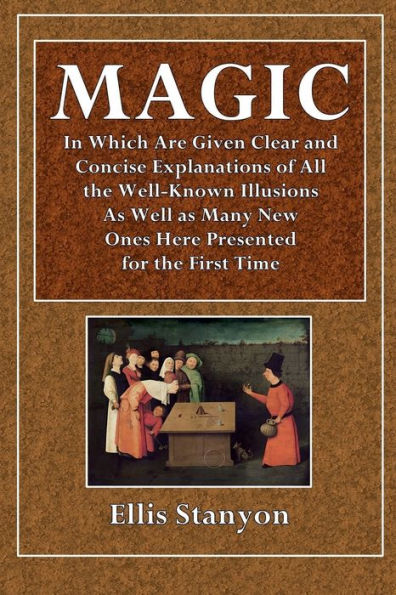Home
Magic, In Which Are Given Clear and Concise Explanations of All the Well-Known Illusions: As Well as Many New Ones Here Presented for the First Time
Loading Inventory...
Barnes and Noble
Magic, In Which Are Given Clear and Concise Explanations of All the Well-Known Illusions: As Well as Many New Ones Here Presented for the First Time
Current price: $8.99


Barnes and Noble
Magic, In Which Are Given Clear and Concise Explanations of All the Well-Known Illusions: As Well as Many New Ones Here Presented for the First Time
Current price: $8.99
Loading Inventory...
Size: OS
*Product Information may vary - to confirm product availability, pricing, and additional information please contact Barnes and Noble
244 Pages. Complete and Unabridged. From the Preface. THE art of pretended magic dates back to the remotest antiquity. It has been known under various names, such as White Magic, Conjuring, Natural Magic, and Prestidigitation. Jannes and Jambres, the magicians of Pharaoh, contended against Moses and Aaron. In the British Museum there is an Egyptian papyrus, which contains an account of a magical séance given by a thaumaturgist named Tchatcha-em-ankh before King Khufu, B.C. 3766. In this manuscript it is stated of the magician: "He knoweth how to bind on a head which hath been cut off, and he knoweth how to make a lion follow him as if led by a rope." The decapitation trick is thus no new thing, while the experiment with the lion, unquestionably a hypnotic feat, shows hypnotism to be old. The temples of Egypt, Greece and Rome were veritable storehouses of magic and mystery. The pagan priesthood attained a wonderful proficiency in optical illusions. In the Middle Ages magic was greatly in vogue. Later on Nostradamus conjured up the vision of the future king of France for the benefit of the lovely Marie de Medicis. This illusion was accomplished by the aid of mirrors adroitly secreted amid hanging draperies. Reginald Scott, in 1584, in "Discoverie of Witchcraft," enumerates the stock feats of the conjurers of his day.








